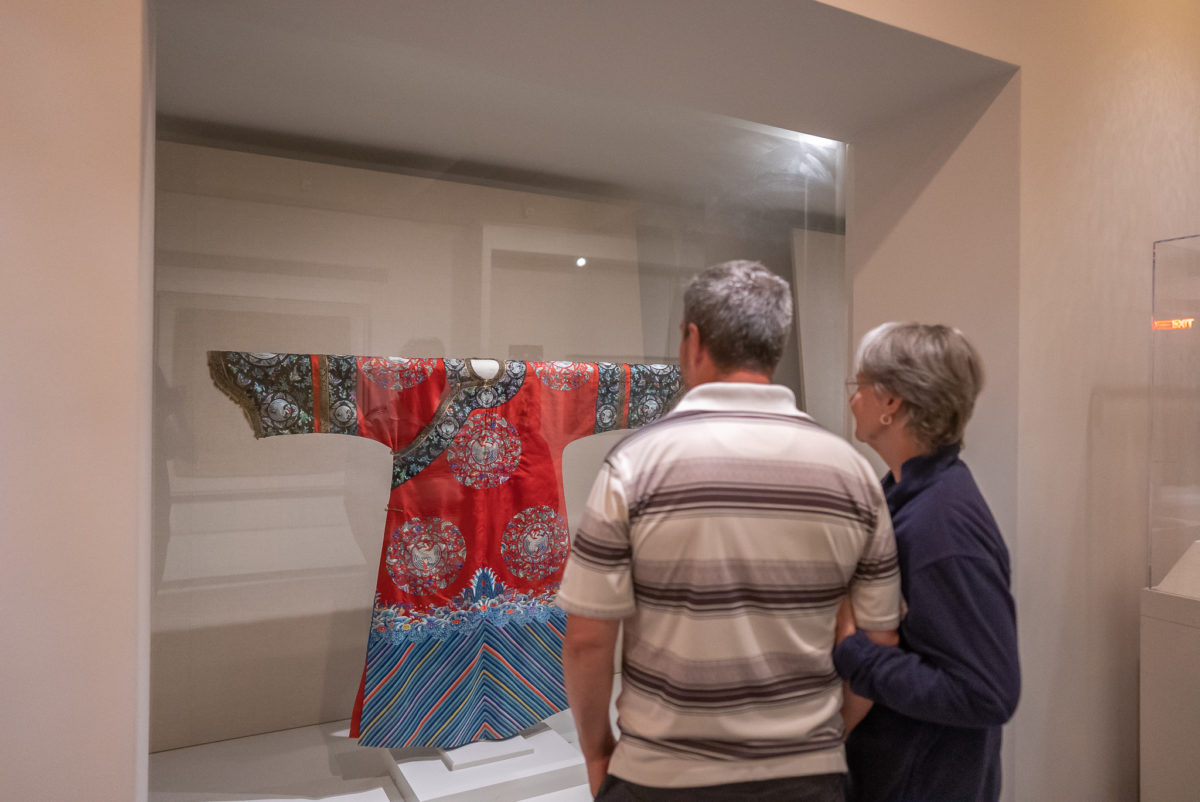Manchu Imperial Consort's Semiformal Court Robe with Design of Nine Five-Clawed Dragons Chasing Pearls and Five Symbols of Imperial Authority, late 18th–early 19th century; Chinese, Qing dynasty, Jiaqing period; silk in tapestry weave (kesi) with metallic threads, sleeve extensions in silk faille; 56 1/2 x 93 inches; Saint Louis Art Museum, Museum Purchase 30:1918
Chinese Silk Textiles of the Ming and Qing Dynasties
July 1–December 18, 2022- Location
- Carolyn C. and William A. McDonnell Gallery 100
- Cost
- Free
Chinese Silk Textiles of the Ming and Qing Dynasties showcases fine examples of Chinese textiles from the Museum’s collection, including clothing, embroideries, hangings, and banners made between 1570 and 1911.
Chinese silk production originated in the Neolithic Yangshao culture during the fourth millennium BCE. However, due to fragility and perishability, the earliest surviving Chinese silk textiles are from the Western Han dynasty (206 BCE–9 CE). Most Chinese silk textiles that remain in good condition are from the Ming dynasty (1368–1644) or the Qing dynasty (1644–1911), and some are well preserved because they had been presented to Tibetan monasteries.
During the Qing dynasty, the minority Manchu ruling class wore silks that were distinct in design and cut from those worn by the majority ethnically Han Chinese population. The finest silk produced at the imperial factories at Nanjing, Suzhou, and Hangzhou were sent to the court in Beijing to be tailored and finished.
Chinese silk textiles were used for many different purposes and settings, but mostly for the luxury and beauty they imparted. These include formal and informal clothing, personal accessories, furnishing fabrics, and decorative pieces for imperial palaces, temples, monasteries, altars, residences, theatrical sets, and military establishments. Chinese silks were dyed to produce all imaginable colors, shades, and hues. Numerous types of weaves were employed, including plain, compound, gauze, and satin. Patterns were created using various techniques such as silk tapestry (kesi), brocading, embroidery, and couching. Motifs on Chinese textiles include mythical creatures like dragons, real animals like birds and bats, floral and plant imagery, geometric forms, Buddhist and Daoist symbols, and various auspicious emblems.
All objects in this exhibition are from the Saint Louis Art Museum’s collection. Numerous generous gifts from local patrons and donors have also greatly augmented the collection over many decades.
Chinese Silk Textiles of the Ming and Qing Dynasties is curated by Philip Hu, curator of Asian art.

